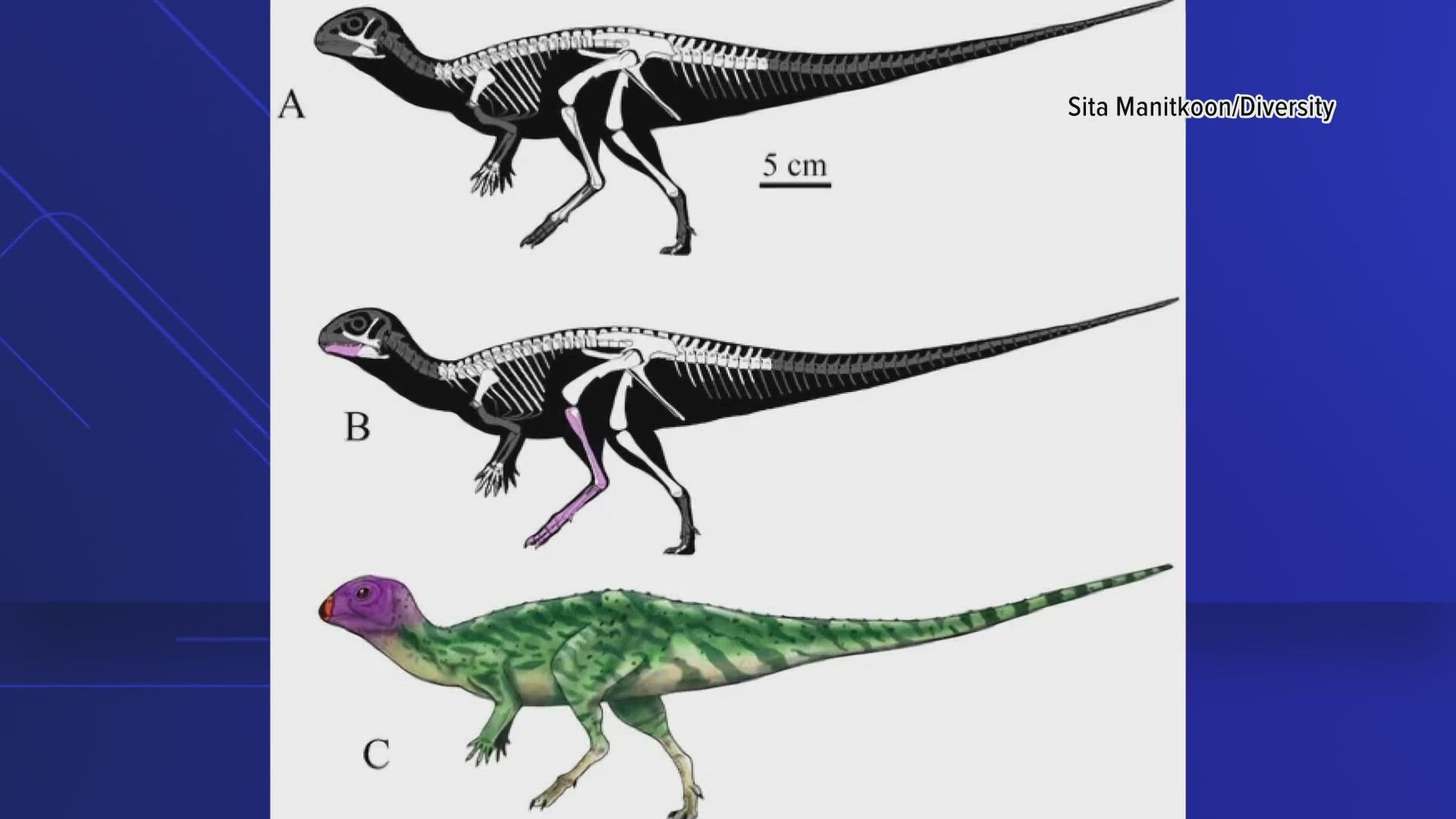KALASIN, Thailand — It's a find millions of years in the making.
Scientists in Thailand have reportedly discovered the bones of what they believe to be a new species of dinosaur.
The new species, dubbed minimocursor phunoiensis in a paper about the find published in the journal "Diversity", is believed to be a part of the neornithischia group, and like other members of the group, it is thought to be herbivorous and bipedal. Scientists also believe it to be the oldest record of a species in the group discovered so far.
The name minimocursor phunoiensis comes from the Latin word "minimus", meaning "the smallest", and the suffix "-cursor", meaning runner.
The bones were found in the Late Jurassic Phu Kradung Formation in northern Thailand, which is considered one of the richest bone-beds in Southeast Asia. The bones are believed to be Late Jurassic or Early Cretaceous in age, meaning they are likely around 145 to 161 million years old. The bones were reportedly actually discovered in 2012, but required years of study to determine that they were of a new species.
The skeleton is also remarkably intact, according to the scientists. The paper said the holotype recreation of the dinosaur, which was pieced together over a period of five years, is over 50% complete and is one of the best-preserved dinosaurs ever found in Southeast Asia.
The paper said the holotype of the bones is made up of a "partially articulated skeleton comprising a series of vertebrae (from the last three cervical to the 10th caudal) with a few ossified tendons; left scapula and manus; entire pelvic girdle; left femur, tibia, and fibula; left tarsals and metatarsals; and a few displaced bones: right jugal, left surangular and angular, incomplete tooth (now considered lost), right femur, tibia and fibula, phalanx, and pedal ungual."
Based on how much of the skeleton was recovered, scientists were able to estimate that this specimen was likely around 60 cm, or just under two feet long. However, the researchers also believe the skeleton to be from a young specimen in the species and estimated that adults could have been up to two meters long.
Bones from two other dinosaurs believed to be of the same species were also found in the same fossil bed, although the scientists have not fully confirmed whether they also belong to minimocursor phunoiensis or not. Given the numerous remains of different sizes found at the location, scientists believe minimocursor phunoiensis was quite common to the area.
Scientists believe the discovery could help to chart the evolution of neornithischian dinosaurs and provide more data about the prehistoric ecosystem in the area.
The study was led by Sita Manitkoon from the Palaeontological Research and Education Centre at Thailand's Mahasarakham University, and aided by many other scientists and researchers.
More from 6 News:

